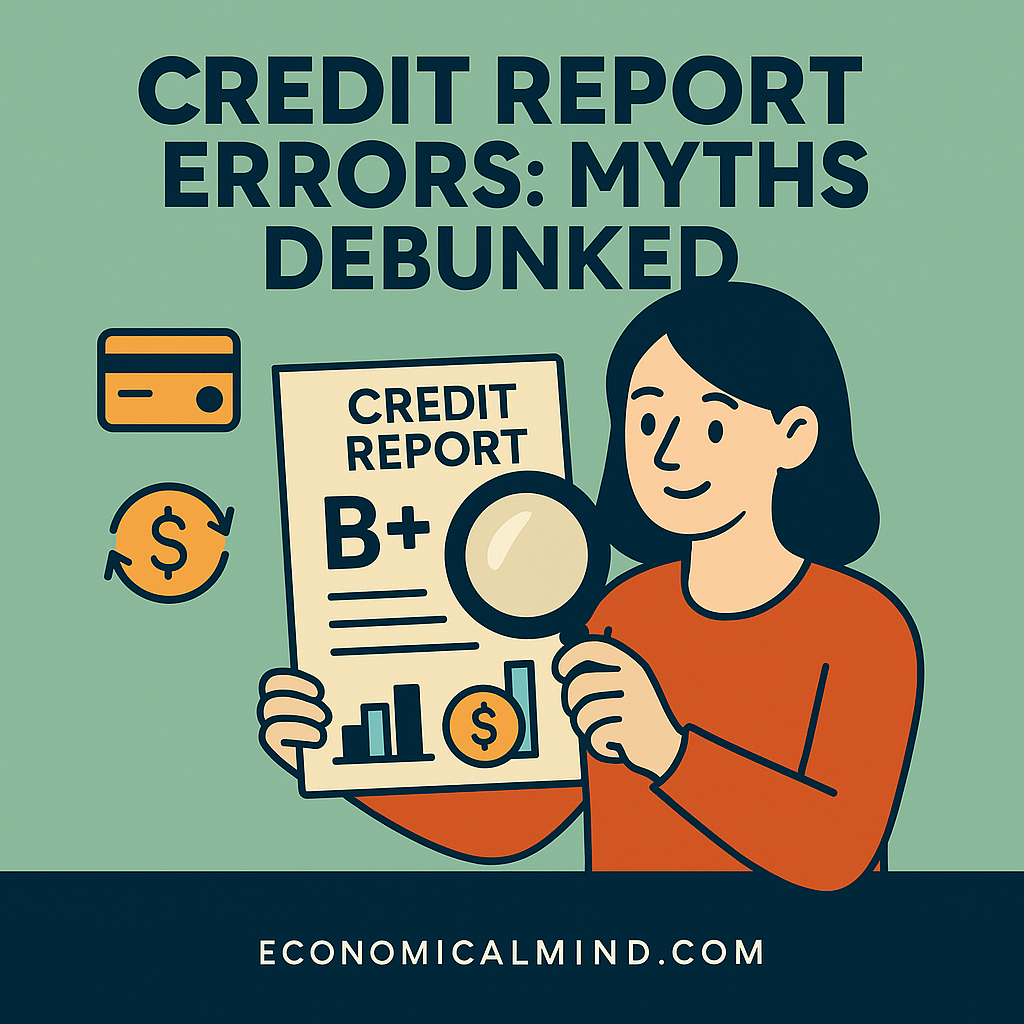
Your credit report is one of the most important tools lenders use to evaluate you—but it’s also one of the most misunderstood. Many people assume their credit report is flawless, or that fixing mistakes is impossible. Neither is true.
Let’s separate the myths from the facts so you can take control of your credit with confidence.
Myth 1: Credit reports are always accurate
It’s easy to assume that credit bureaus never make mistakes, but that’s far from reality. According to the Federal Trade Commission, one in five consumers finds an error on their credit report.
Common issues include incorrect balances, outdated accounts, or someone else’s information appearing on your file. Regularly checking your report is essential to catch mistakes early.
Myth 2: Checking your own credit hurts your score
This one’s been around for years—and it’s completely false. Checking your own credit report is considered a soft inquiry, which has no impact on your score.
Only hard inquiries, like applying for a loan or credit card, can temporarily lower your score. Reviewing your report regularly is not only safe—it’s smart financial maintenance.
Myth 3: You can’t fix errors on your credit report
Many people believe credit bureaus are impossible to deal with, but federal law gives you the right to dispute any inaccurate or incomplete information.
Under the Fair Credit Reporting Act (FCRA), credit bureaus must investigate your dispute—usually within 30 days—and correct verified errors. You can file disputes online through Experian, Equifax, or TransUnion.
Myth 4: All three credit reports are identical
While your credit reports from the three major bureaus often overlap, they’re not always identical. Each bureau collects data from different lenders, meaning some accounts or updates might appear on one report but not the others.
That’s why it’s important to check all three reports—not just one—to ensure complete accuracy.
Myth 5: Old negative information stays on your report forever
Thankfully, negative marks don’t last forever. Most late payments, charge-offs, and collections disappear after seven years, while bankruptcies typically remain for ten years.
Once that period ends, those items should automatically fall off your report. If they don’t, you can file a dispute to have them removed.
Myth 6: Paying off a debt immediately erases it from your report
Paying off debt is a great move, but it doesn’t make the record vanish. Closed or paid accounts remain on your report for up to seven years, showing lenders your repayment history.
The good news? A paid account is viewed far more positively than an unpaid one, so it still helps your creditworthiness.
Myth 7: A good credit score guarantees loan approval
A strong score definitely helps, but it’s not the only factor lenders consider. They’ll also look at your income, employment history, debt-to-income ratio, and the type of loan you’re requesting.
Think of your credit report as part of the bigger financial picture—not the entire story.
Real ways to stay on top of your credit
- Check all three reports (Experian, Equifax, TransUnion) at least once a year
- Dispute any inaccurate or outdated information immediately
- Set up free credit monitoring alerts for suspicious activity
- Keep credit card balances below 30% of their limits
- Make payments on time every month
Key takeaway
Credit reports aren’t perfect—and believing the myths can cost you. By checking regularly, disputing errors, and maintaining healthy credit habits, you can protect your financial reputation and improve your long-term borrowing power.
